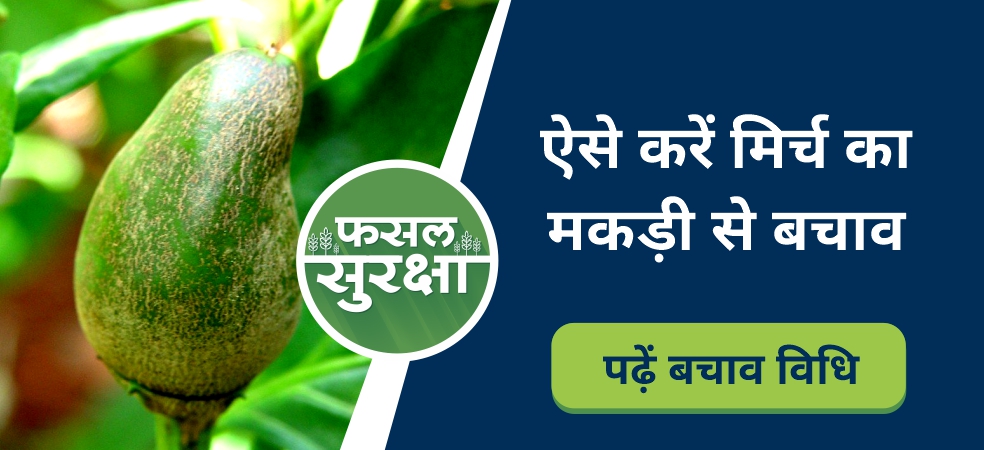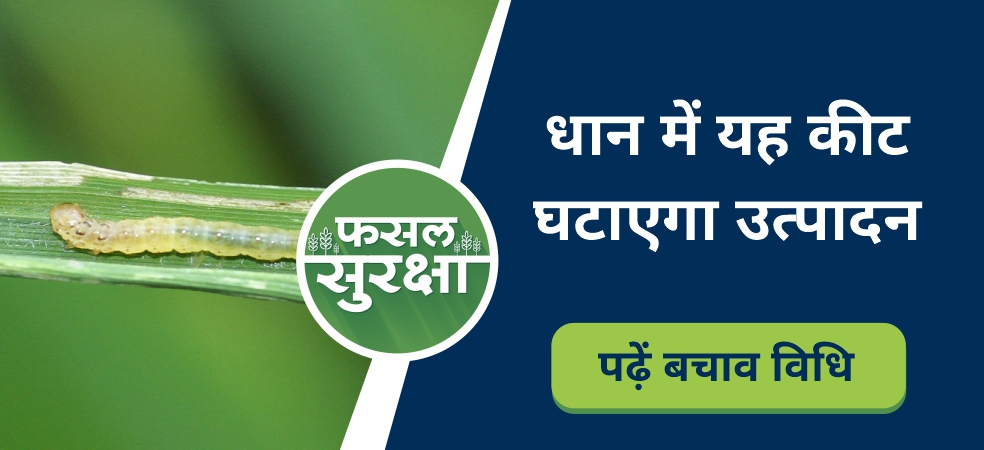Measures for identification and prevention of Fusarium wilt disease in chilli crops
Fusarium wilt:
Fusarium wilt is a common disease of the chilli crop. It is a seed and soil borne disease caused by a fungus called Fusarium oxysporum. Affected plants suddenly wither and gradually dry up. Such plants are easily uprooted when pulled by hand. Due to Fusarium wilt, the roots of the diseased plants turn brown and black from inside. When the diseased plants are cut, the tissue appears black. The leaves of the plants wither and fall down. This disease progresses due to excessive moisture and heat in the air and soil and when the right moisture environment is provided by irrigation.
biological management:
Apply Combat (Trichoderma viride @ 500 gm) or Monas Curb (Pseudomonas fluorescens 1% WP) @ 500 gm per acre.
According to TNAU:
Mix @ 2 kg Combat (Trichoderma Viride) formulation with 50 kg FYM, sprinkle water over it and cover with a thin polythene sheet. After 15 days when the growth of mycelia is visible on the heap, apply the mixture in one acre area.
ShareFor more such important information related to the agriculture sector, keep reading the articles of Gramophone daily. If you liked today’s information, then do not forget to like and share
Nutrient Management at Booting Stage in Paddy Crop
Nutrient management in the booting stage is an important measure to get a higher yield of paddy. In paddy crop, the booting stage starts in 60-65 days after transplanting. At this stage, do nutrition management in a proper way like this –
Nutrition management:- To get high yield of paddy, it is very necessary to use urea @ 40 kg + MOP @ 10 kg + Calbor @ 5 kg per acre.
Urea:- Urea:- Urea is the biggest source of nitrogen supply in paddy crops. With its use, there is no problem of yellowing and drying in the leaves. and Urea accelerates the process of photosynthesis.
MOP (Muriate of Potash):- Potassium plays an important role in transporting the sugar synthesized in the rice plant to all parts of the plant. Potassium promotes the efficiency of natural nitrogen. Increases immunity in plants.
Calbor:- This product contains a combination of Calcium 11% + Magnesium 1.0% + Sulphur 12% + Potassium 1.7 + Boron 4% which are essential for nutrition, growth, photosynthesis, transport of sugars and cell wall formation. Calbor is compatible with most of the commonly used fertilizers and agro chemicals.
ShareSymptoms and control measures for mite damage in chilli crop
Symptoms of damage
These are very small insects that suck the sap from the lower surface of the leaves, causing the leaves to turn downwards. Due to sucking of sap from the leaves, white to yellow spots appear on the surface of the leaves. As the infection becomes more severe, first the leaves start showing silver color and later these leaves fall.
Control measures
For its control, take a spray of Oberon (Spiromesifen 22.90% SC) @ 160 ml or Omite (propargite 57% EC) @ 600 ml + silicomaxx @ 50 ml per acre.
ShareFor more such important information related to the agriculture sector, keep reading the articles of Gramophone daily. If you liked today’s information, then do not forget to like and share
Measures for identification and prevention of choanephora blight disease in chilli crops
Symptoms of damage
The causative agent of this disease is Choanephora cucurbitarum, the fungus of the disease usually infects the upper part of the plant, flowers, leaves, new branches and fruits. In the initial stage, water-soaked areas develop on the leaf. The affected branch dries up and hangs. In severe infection, the fruits turn brown to black in color, a layer of fungus can be seen on the infected part.
biological management
Apply Combat (Trichoderma viride @ 500 gm) or Monas Curb (Pseudomonas fluorescens 1% WP) @ 500 gm per acre.
ShareFor more such important information related to the agriculture sector, keep reading the articles of Gramophone daily. If you liked today’s information, then do not forget to like and share
Measures for identification and prevention of die back disease in chilli crops
Dieback:- Dieback is a major problem in chilli. This disease is caused by a fungus called Colletotrichum capsai. Yellow spots appear on the fruit of chilli. Due to which the fruit gets rotten. Due to this disease, the ends of the tender twigs rot backwards. The entire top of the branch or plant withers. Several black dots appear scattered on the surface of the affected twigs. The top or some lateral branches become dead or in case of severe infestation the whole plant dries up. Partially affected plants produce fewer and lower quality fruits.
Control measures
To control, spray Score (Difenoconazole 25% EC) @ 50 ml per 100 liters of water. Or spray Index (Myclobutanil 10% WP) @ 80 g + SilicoMaxx @ 50 ml per acre at the rate of 150 to 200 liters of water.
ShareFor more such important information related to the agriculture sector, keep reading the articles of Gramophone daily. If you liked today’s information, then do not forget to like and share
Major caterpillars and their control measures in soybean crops
Soybean pod borer
This insect causes a lot of damage to the soybean crop, the attack of this insect occurs in the early stage of soybean crop, first this insect first damages the soft parts of the plant, after that the soybean pod and Later damages the seed, this caterpillar enters the soybean pod and damages it by eating the pod.
Gram pod borers
Gram pod borers attack all parts of the plant, but they prefer to eat flowers and pods. Black holes appear on the affected pods and larvae are seen hanging out of the pods while feeding. The adult caterpillar eats the chlorophyll of the leaves, which causes the leaves to turn into skeletons. In the severe infestation, leaves break off and the plant dies.
Tobacco caterpillar.
The larvae of this insect scrape the leaves of soybean and eat the chlorophyll of the leaves, due to which a whitish yellow color appears on the eaten leaves. They also damage stems, buds, flowers and fruits when attacked excessively. Due to which only the sticks are visible on the plants.
Control measures
Spray, Plethora (Novaluron 05.25 % + Indoxacarb 04.50 % SC) @ 350 ml or fame (Flubendiamide 39.35% w/w SC) + Silicomaxx @ 50 ml, per acre @ 150 to 200 liters of water.
ShareFor more such important information related to the agriculture sector, keep reading the articles of Gramophone daily. If you liked today’s information, then do not forget to like and share
Identification and control of leaf folder pests in paddy crops
Leaf folder :- The female of this insect lays eggs in groups near the veins of the leaves of paddy. The larvae come out from these eggs in 6-8 days. These larvae first eat soft leaves and later, by making silky thread with their saliva, twist the leaf from the edges and eat it by scraping it inside. The outbreak of this pest is more in the month of August-September. Paddy leaves appear white and scorched in the affected field.
control measures
For its control, Spray Super 505 (Chlorpyriphos 50% + Cypermethrin 5% EC) @ 280 ml or Lamonova (Lambda-cyhalothrin 4.90% CS) @ 100 ml + Silicomaxx @ 50 ml per acre @ 150 -200 liters of water.
ShareFor more such important information related to the agriculture sector, keep reading the articles of Gramophone daily. If you liked today’s information, then do not forget to like and share
Nutrient management and necessary spraying during ball formation in cotton crop
-
Nutrient management is an important measure to get a higher yield of cotton. Ball formation in the cotton crop starts in 60-65 days after sowing. At this stage, do nutrition and pest management in a proper way like this –
Nutrition management
-
To get a higher yield of cotton, it is very necessary to use Urea 30 kg + MOP 30 kg + Magnesium Sulphate 10 kg per acre.
Spraying required for ball formation
-
When 5 to 10% flower begins to form in cotton crop, then at this stage, Nutriful Maxx (Fulvic acid extract 20% + Calcium, Magnesium and potassium in trace amounts, 5% + amino acids) @ 250 ml or Double (Homobrassinolide 0.04% w/w) @ 100 ml per acre, @150 to 200 liter of water.
Advantages of use
-
Nutriful Maxx – Nutriful Maxx is a plant growth promoter. Fulvic acid extract – 20% + Calcium, Magnesium and potassium in trace amounts, 5% + amino acids are found in it. It enhances the color of flowers, the quality of the ball, and also increases the availability of nutrients. Boosts immunity against drought, frost etc.
-
And the process of pollination is completed, due to which the flowers and buds do not fall. And keeps the plants stress free. It increases the quality as well as production of crops.
ShareFor more such important information related to the agriculture sector, keep reading the articles of Gramophone daily. If you liked today’s information, then do not forget to like and share
What were the prices of fruits and crops on August 18 in different mandis of the country?
What are the Prices of Fruits and Crops in different cities of the country? |
|||
City |
Commodity |
Min Price (In Kg) |
Max Price (In Kg) |
Ratlam |
Ginger |
30 |
32 |
Ratlam |
Potato |
18 |
20 |
Ratlam |
Tomato |
28 |
35 |
Ratlam |
Green Chilli |
50 |
60 |
Ratlam |
Okra |
14 |
18 |
Ratlam |
Lemon |
22 |
25 |
Ratlam |
Cauliflower |
25 |
30 |
Ratlam |
Cabbage |
35 |
40 |
Ratlam |
Brinjal |
13 |
14 |
Ratlam |
Bitter Gourd |
35 |
36 |
Ratlam |
Jack Fruit |
18 |
20 |
Ratlam |
Cucumber |
13 |
14 |
Ratlam |
Capsicum |
36 |
40 |
Ratlam |
Banana |
35 |
36 |
Ratlam |
Pomegranate |
45 |
55 |
Ratlam |
Apple |
85 |
– |
Ratlam |
Papaya |
30 |
34 |
Lucknow |
Potato |
20 |
21 |
Lucknow |
Onion |
9 |
10 |
Lucknow |
Onion |
11 |
12 |
Lucknow |
Onion |
13 |
14 |
Lucknow |
Onion |
15 |
16 |
Lucknow |
Onion |
9 |
11 |
Lucknow |
Onion |
12 |
13 |
Lucknow |
Onion |
14 |
– |
Lucknow |
Onion |
14 |
15 |
Lucknow |
Pineapple |
25 |
28 |
Lucknow |
Coconut Green |
40 |
42 |
Lucknow |
Garlic |
20 |
25 |
Lucknow |
Garlic |
30 |
40 |
Lucknow |
Garlic |
45 |
50 |
Lucknow |
Garlic |
15 |
20 |
Lucknow |
Garlic |
25 |
32 |
Lucknow |
Garlic |
35 |
40 |
Lucknow |
Garlic |
45 |
50 |
Lucknow |
Cauliflower |
25 |
30 |
Lucknow |
Capsicum |
45 |
55 |
Lucknow |
Green Chilli |
55 |
60 |
Lucknow |
Lady Finger |
20 |
– |
Lucknow |
Lemon |
48 |
– |
Lucknow |
Cucumber |
24 |
26 |
Lucknow |
Ginger |
36 |
40 |
Lucknow |
Carrot |
28 |
30 |
Lucknow |
Mosambi |
28 |
– |
Jaipur |
Onion |
12 |
13 |
Jaipur |
Onion |
14 |
15 |
Jaipur |
Onion |
15 |
16 |
Jaipur |
Onion |
6 |
– |
Jaipur |
Onion |
8 |
– |
Jaipur |
Onion |
9 |
– |
Jaipur |
Onion |
10 |
– |
Jaipur |
Garlic |
8 |
10 |
Jaipur |
Garlic |
15 |
18 |
Jaipur |
Garlic |
22 |
25 |
Jaipur |
Garlic |
28 |
30 |
Ratlam |
Onion |
3 |
6 |
Ratlam |
Onion |
6 |
8 |
Ratlam |
Onion |
8 |
13 |
Ratlam |
Onion |
13 |
15 |
Ratlam |
Garlic |
7 |
9 |
Ratlam |
Garlic |
10 |
16 |
Ratlam |
Garlic |
17 |
24 |
Ratlam |
Garlic |
26 |
45 |
Shajapur |
Onion |
3 |
6 |
Shajapur |
Onion |
9 |
11 |
Shajapur |
Onion |
12 |
14 |










